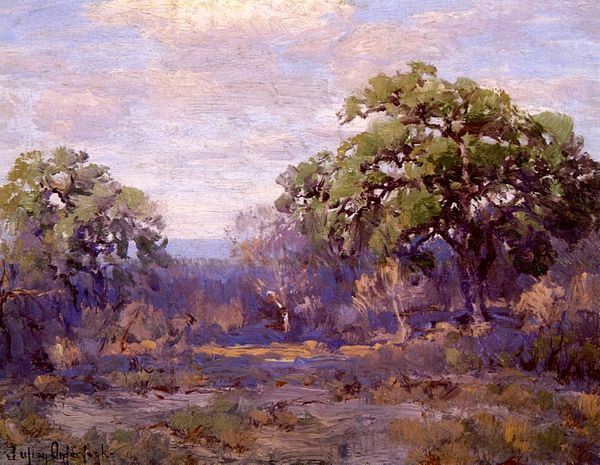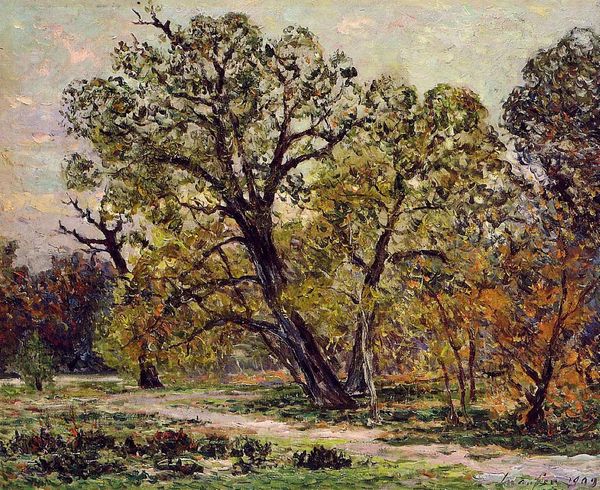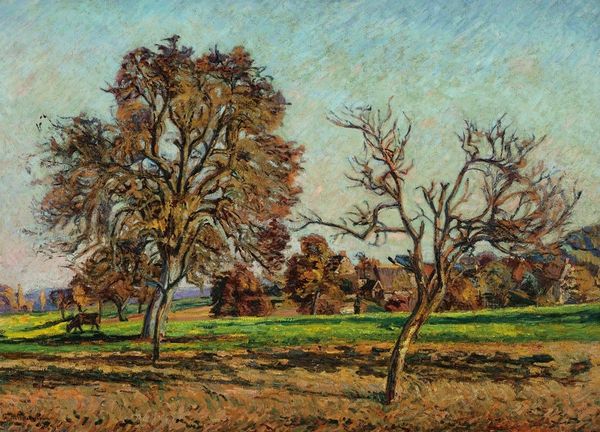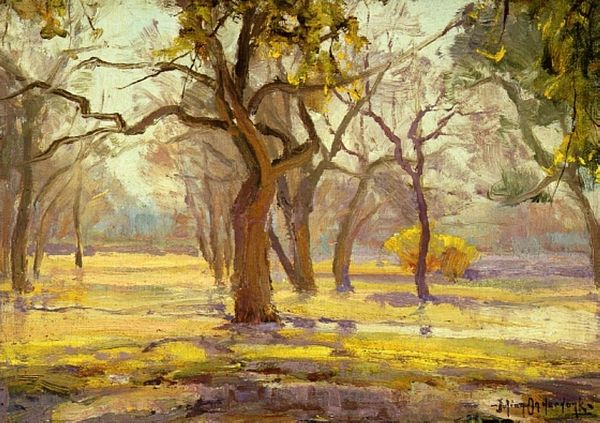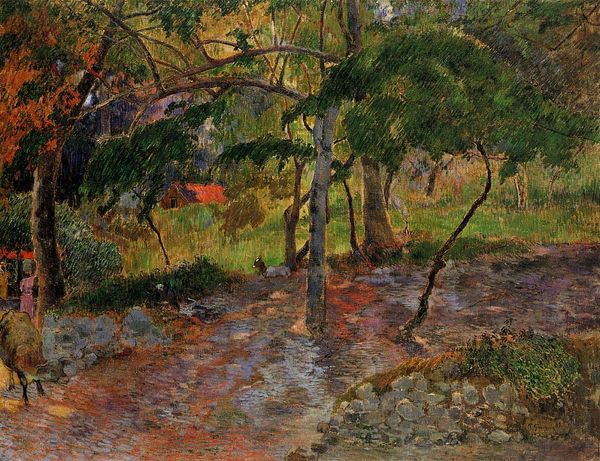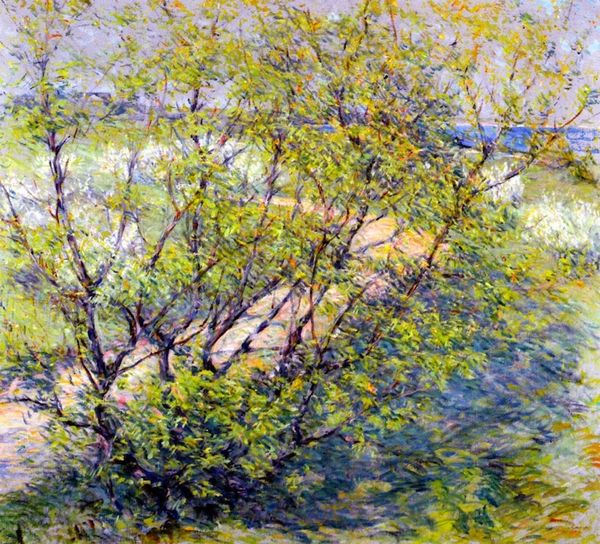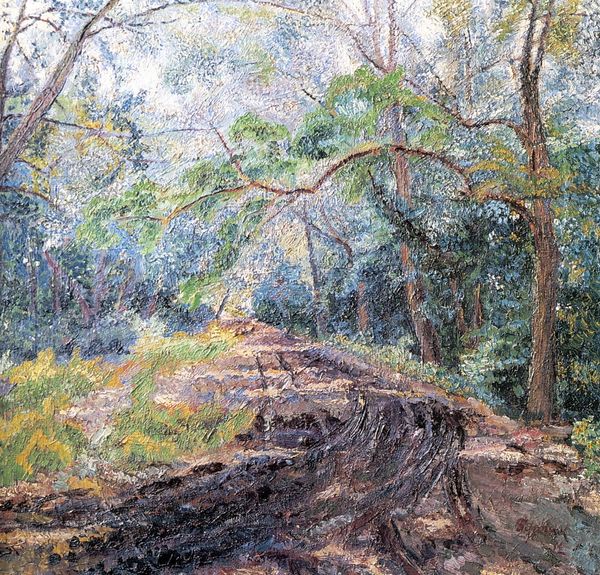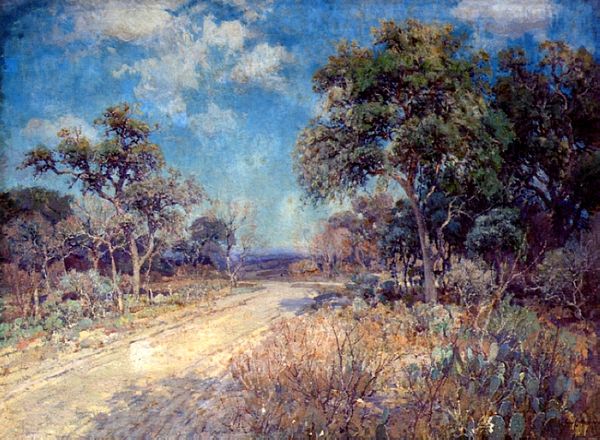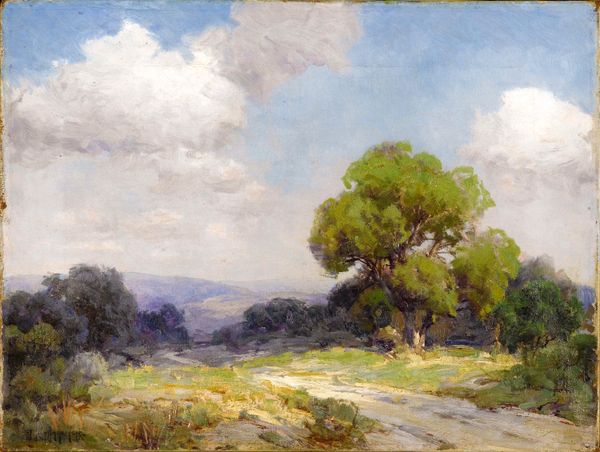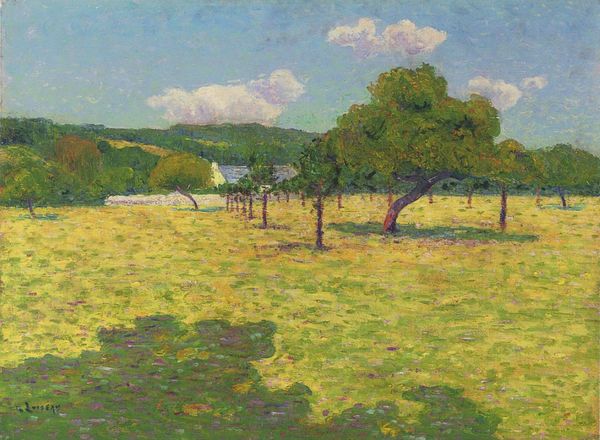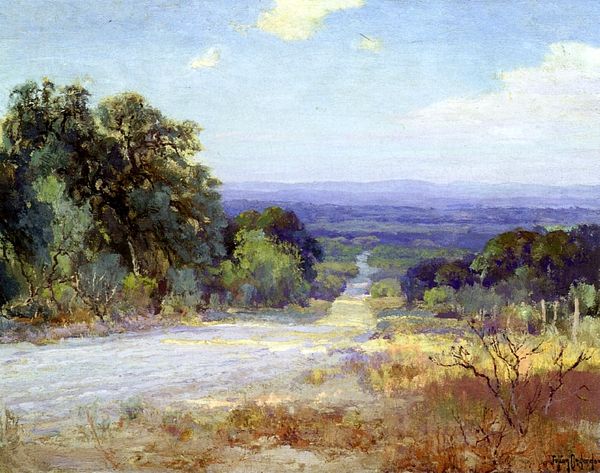
Copyright: Public domain
Curator: Robert Julian Onderdonk's "Late Afternoon, Alamo Heights, San Antonio, Texas" painted in 1922. Editor: It strikes me as a serene scene, bathed in sunlight yet possessing a somewhat melancholic air with its muted palette. Curator: Onderdonk was working "en plein air," directly in the landscape, focusing on capturing the immediate sensory experience of the Texan landscape using oil paint. We might see the canvas as the direct result of environmental immersion; consider his choices in materiality: brushes, canvas, paint pigment. Editor: Absolutely. I'm immediately thinking about landscape as a site of cultural production. What ideas of Texan identity were circulating at the time, and how did this fit within a wider nationalist narrative of the early 20th century? Who was able to consume this image, and what did it mean for them? Curator: The very application of paint seems to embody the sun-drenched, somewhat dry quality of the Texas terrain. One cannot separate this artistic expression from the economic dimensions tied to both the creation and circulation of art. How were resources used, and who benefited? Editor: The almost Impressionistic rendering gives a sense of place but simultaneously obscures detail. Whose stories are silenced in this seemingly benign portrayal of the land? Whose labor sustained it, and whose claims were disregarded in constructing this vision of pastoral beauty? We must consider the socio-political underpinnings inherent in these seemingly idyllic landscapes. Curator: I find it revealing to think about how artists use materials to communicate—that process is often a labor of love for the creator, whether consciously political or not, but it has social consequences. It raises questions around what making choices mean as creative work, from labor relations to cultural significance. Editor: Art isn’t just pretty scenery. I appreciate your highlighting labor involved in creation because, ultimately, images impact social justice as carriers of cultural memory and possible instigators for resistance or reformation. Curator: Indeed. Examining the landscape and material process reveals the rich intersection between production, identity, and environment within that moment of creation. Editor: Exactly; examining the multiple layers allows us to engage critically to reveal power dynamics behind depictions that on the surface may seem uncomplicated.
Comments
No comments
Be the first to comment and join the conversation on the ultimate creative platform.
